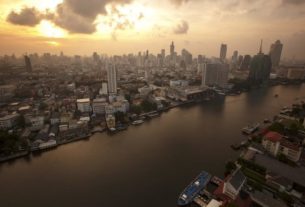US-based Miyamoto International sounds the alarm on disaster readiness and says Bangkok is not immune from earthquakes
The Thai property industry has seen disaster awareness heighten against the backdrop of current flooding in Thailand and the March earthquake and tsunami in Japan.
Both the public and private sectors are looking to retrofit and strengthen buildings, especially against quakes. Miyamoto International Inc says it can offer the best solution at the additional cost of 2-5% for new buildings and 5-15% of business costs for existing buildings.
The California-based Miyamoto International, a global earthquake and structural engineering firm, has recently set up regional operations in Bangkok, thanks to the country’s strategic central location in the region.
Kit Miyamoto, the company’s president and CEO, says earthquakes are a new issue in Thailand, where they used to pose little risk at all.
The country has changed greatly in the past few decades. Bangkok in particular has seen an increasing number of high-rise buildings to serve its growing population. Coupled with the soft-soil nature of the city, the build-up risks damage from long-distance earthquakes.
Similarly, changes in weather and demography have intensified the severity of floods over time.
“The first thing to be done is to truly understand the new risk caused by new factors,” Mr Miyamoto said. “The most important issue is to engage the public, because the private sector alone cannot do it. Once they understand, we can do risk mitigation.”
Different approaches exist for dealing with flood risk, such as draining rivers, making them deeper or building dams and channels.
On his second visit to Bangkok for discussions with stakeholders, Mr Miyamoto found a tremendous need for both earthquake and flood management in Thailand and the region.
Though Bangkok sits away from the coast, he said, “eruptions about 500 kilometres away will affect downtown Bangkok greatly”.
The situation in Thailand is comparable to Mexico City in 1985, when quakes off Mexico’s Pacific coast _ more than 350 km away _ killed at least 10,000 people and damaged 30% of structures.
“I think the private sector will move very fast because doing nothing is usually really expensive over five to 10 years. Here, risk is not well defined and publicised though the awareness already exists. We define not only the risk but the solution and the cost of it,” Mr Miyamoto said, adding that many cost-effective technologies with limited business disruption are now available.
Miyamoto International aims to grow fast in Bangkok. The company sees potential for the larger Southeast Asia region, where disaster prevention measures are low and risk is high.
“If you propose the efficient system and the right thing to people in a country, profit will come even though you don’t look for it.”
For Thai operations, Mr Miyamoto envisions a company of highly educated engineers who will need further training in disaster mitigation, response and reconstruction. “We want to build an engineering company here, not somewhere else,” he said.
Komsarn Wijitwikorn, a principal at Miyamoto International in Thailand, advises people to set aside their fear of natural disasters and learn how to prepare for and live with them.
According to Pran Siamwalla, president of the Association of Natural Disaster Prevention Industry, said rising populations and global warming have intensified natural disasters. More than one million deaths were attributed to natural disasters in the 2003-10 period.
“We cannot spend life as usual,” he said. “It’s time to start thinking seriously about disaster prevention.”
Miyamoto International also operates a non-profit organisation, Miyamoto Global Disaster Relief, which has undertaken rescue operations in devastated areas.
Source: http://www.bangkokpost.com/business/economics/258459/shaking-up-the-system


